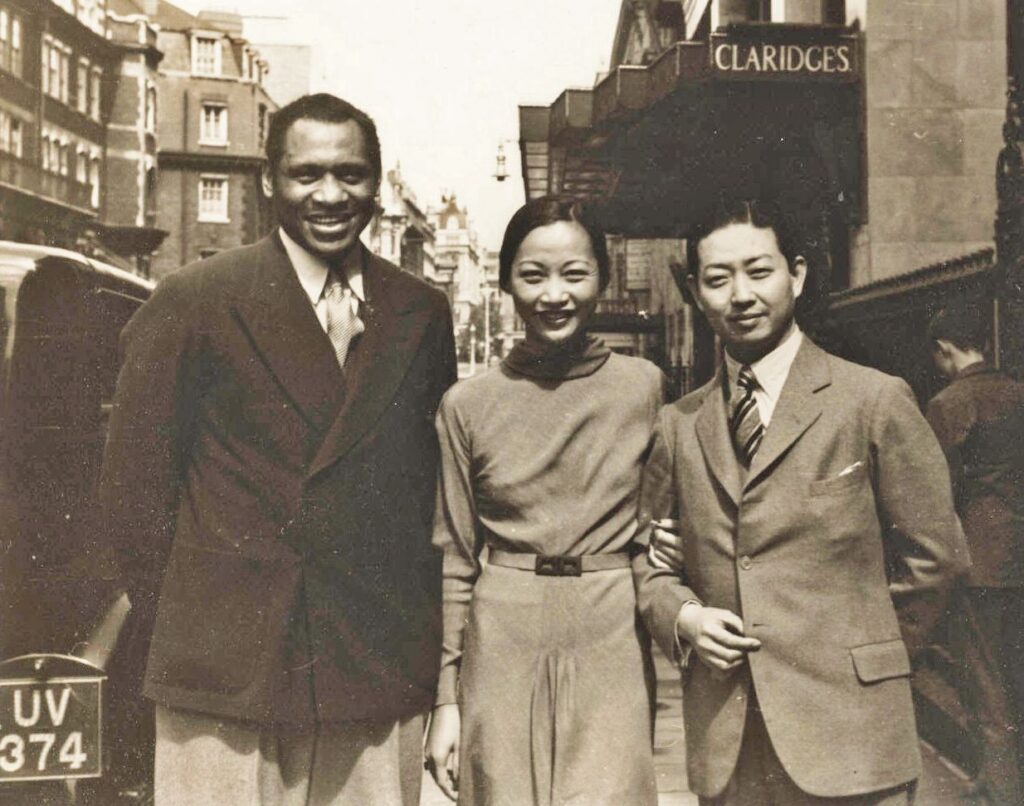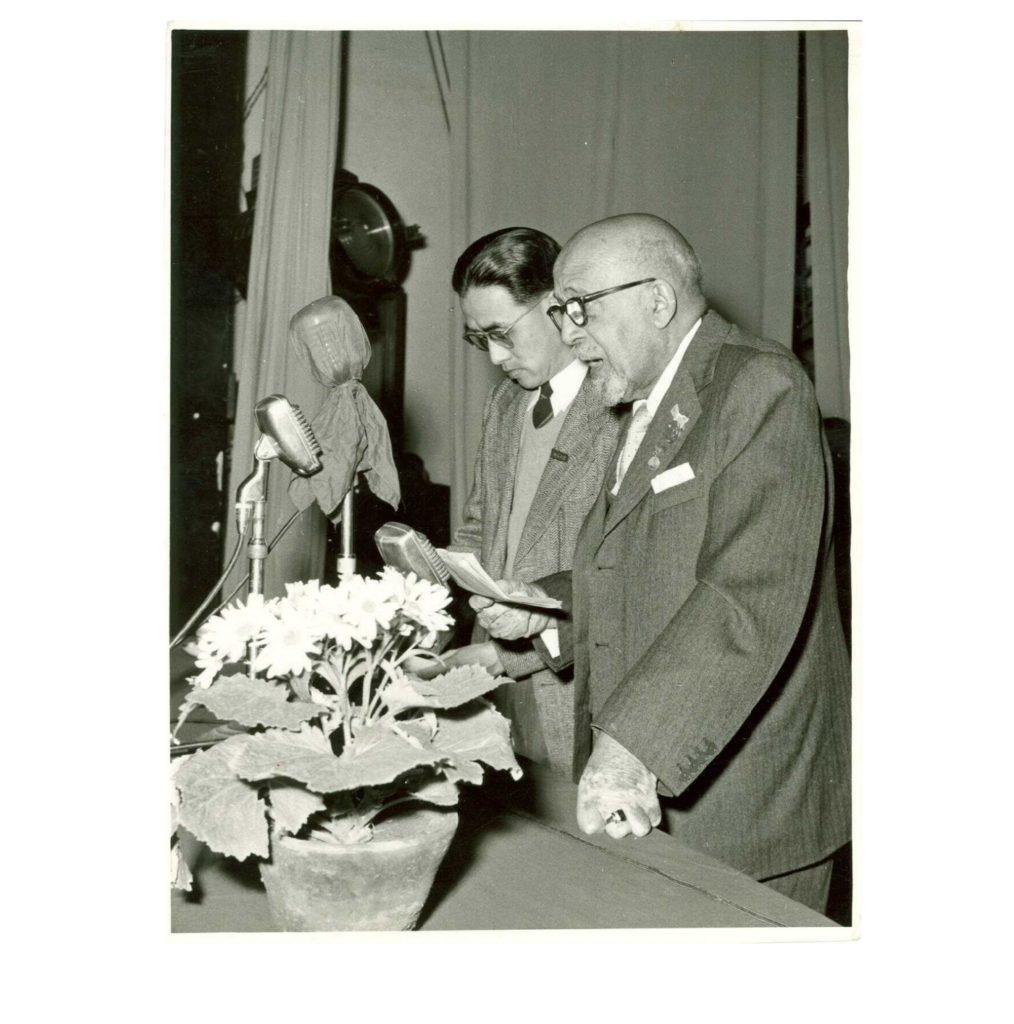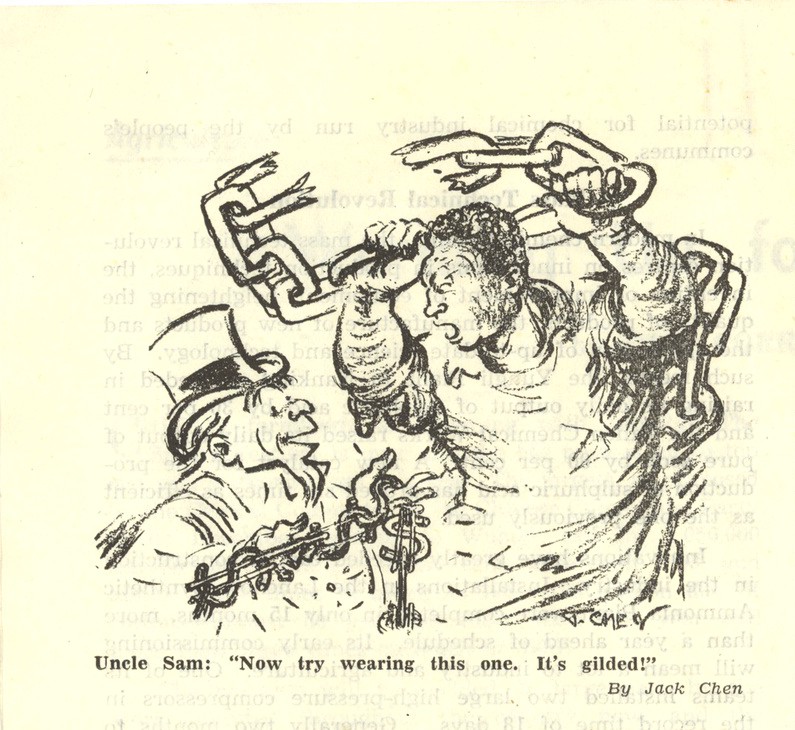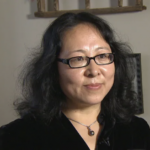Gao Yunxiang, professor of history at Ryerson University, highlights the close relationships between three famous African Americans and two notable Chinese artists in the early twentieth century.
In the steamy July of 1933, the American writer Langston Hughes (1902–1967) sojourned from Moscow to “incredible” Shanghai via Japan, becoming the first Black intellectual/writer to step on China’s soil. He would write of his first impression in his autobiography:
“With the sun beating down on the Bund, the harbor full of Chinese junks, foreign liners and warships from all over the world. It was hot as blazes. I did not know a soul in the city. But hardly had I climbed into a rickshaw than I saw riding in another along the Bund a Negro who looked exactly like a Harlemite. I stood up in my rickshaw and yelled, ‘Hey, man!’ he stood up in his rickshaw and yelled, ‘What ya sayin’?’ we passed each other in the crowded street, and I never saw him again.”’
Langston Hughes
The significance of Hughes milestone trip went beyond this serendipitous encounter. What he experienced in Shanghai rings in his 1937 poem “Roar, China!”
Hughes’s image in China foregrounded his intellectual capacity over stereotypical “primitive” athletic and musical personas and the commercialized exoticism of Blacks. He played a unique role in connecting the liberation campaigns of Chinese and African Americans.

Hughes’s visit to Shanghai was preceded by his romance with the Sino-Caribbean dancer-choreographer Sylvia Si-lan Chen (ca. 1905–1996). In his autobiography, he wrote that in “Si-lan, I found a delicate, flowerlike girl, beautiful in a reedy, golden-skinned sort of way, in her long, tight, high-necked Chinese dresses with a little slit at the side showing a very pretty leg. Si-lan was the girl I was in love with that winter [1932–33 in Moscow].” Chen was known to the most famous African American singer and actor of the era, Paul Robeson (1898–1976), who fondly remembered meeting Chen and her siblings. Of their meeting, Robeson wrote, “In Moscow, some years ago [1934] I met three young Chinese, a fellow named Jack Chen and his two sisters. Jack was a newspaperman, one of his sisters was a motion picture technician and the other was a dancer.”
Sylvia Si-lan Chen, who captured the fanciful gazes and imaginations of two African American cultural giants of the twentieth century, was born in Trinidad, British West Indies, to Eugene Chen, the would-be minister of foreign affairs of the Republic of China, and his French Creole wife. Emerging as the first “modern Chinese/Soviet dancer-choreographer” with an international reputation, Chen’s Chinese, African, and French heritages afforded her a host of complex racial and political experiences as she choreographed ethnicity, war, and revolution around the globe.
Chen and Hughes were both engaged in efforts to support China’s resistance against Japan during the WWII. Their sentiments were shared by Paul Robeson, who in 1941 recorded an album of Chinese resistance and folk songs, featuring a cover of the song, “Chee Lai!” Collaborating with Robeson on the album’s overall production was Liu Liangmo (ca. 1909–1988), a Christian activist and journalist who had recently arrived in the United States after launching the mass singing movement for wartime mobilization in China. Robeson and Liu made the theme song of the trans-Pacific masses singing a global hit. Under the title “March of the Volunteers,” it became the national anthem of the People’s Republic of China. Such collaborations served as a prelude for Robeson’s long alliance with leftist Chinese Americans and the People’s Republic of China and Liu’s consequential collaboration with African Americans.

In contrast to Hughes and Robeson, W. E. B. Du Bois (1868–1963) initially took an opposite stance in the Asia-Pacific War. Soon after his first trip in East Asia in 1936, he proclaimed, “I believe in Japan. It is not that I sympathize with China less, but that I hate white European and American propaganda, theft, and insult more. I believe in Asia for the Asiatics and despite the hell of war and fascism of capital, I see in Japan the best agent for this end.” His perception that Japan would act as a pillar in Asia to uplift the colored world, however, would shift. On February 23, 1959, Du Bois, accompanied by his wife, Shirley Graham Du Bois, celebrated his ninety-first birthday by speaking to more than 1,000 faculty members and students at Beijing University, China’s most prestigious institution of higher learning, and to the world by radio.

In his epic speech, Du Bois proclaimed Chinese and African dignity and unity in the face of Western racism, colonialism, and capitalism: “Africa, Arise, and stand straight, speak and think! Turn from the West and your slavery and humiliation for the last 500 years and face the rising sun… China is flesh of your flesh and blood of your blood.” Both China and Japan played dynamic roles in the evolution of Du Bois’s famous concept of color line.

Overall, these five citizens of the world interacted with one another in a variety of ways, at times collaborating and contributing to historic alliances, at other times falling in and out of love. Together, their lives stand as powerful counters to narratives that foreground racism and alienation. Their lives offer a view into the power and potential of Black internationalism and Sino–African American collaboration. “Arise, Africa!” and “Roar, China!” as articulated by Du Bois and Hughes, respectively, match the shared struggles of a nation and a nation-within-a-nation. Their power and promise resonate to this day.
Gao Yunxiang’s forthcoming book Arise, Africa! Roar, China! Black and Chinese Citizens of the World in the Twentieth Century (University of North Carolina Press, 2021) explores the close relationships between three of the most famous twentieth-century African Americans: Langston Hughes, Paul Robeson, and W. E. B. Du Bois, and their little–known Chinese allies: journalist, musician, and Christian activist Liu Liangmo, and Sino-Caribbean dancer-choreographer Sylvia Si-lan Chen.
Charting a new path in the study of Sino-American relations during World War II and the Cold War, Gao foregrounds the experiences of African Americans to combine the study of Black internationalism and the experiences of Chinese Americans with a trans-Pacific narrative and an understanding of the global remaking of China’s modern popular culture and politics. She reveals earlier and more widespread interactions between Chinese and African American leftists than accounts of the familiar alliance between Black radicals and Mao’s China would have us believe. The book’s multilingual approach draws from rarely used archival streams in China and in Chinatowns and elsewhere in the United States.


